
views
X
Trustworthy Source
EDIS
Electronic database of the University of Florida Institute of Food and Agricultural Sciences's peer-reviewed articles
Go to source
The pests cannot be killed by most pesticides. So, gardeners will need to use gardening methods to make their soil as inhospitable as possible to the nematodes. Practices include solarizing the soil and rotating crops to discourage nematodes.
Killing Nematodes with Soil Solarization

Work through the soil with a hoe to break up clumps. Before solarizing the soil in your vegetable garden, use a rake or a hoe to turn over and break up clumps in the top 6–8 inches (15–20 cm) of soil. Turning up the soil will allow the heat from the sun to penetrate deeper into the dirt. Turning up the soil will also bring many nematodes to the surface, leaving them exposed and vulnerable. Solarizing is the process of using heat from the sun to raise the temperature of soil in a garden. The sharp temperature increase will kill nematodes in the worked-through portion of the soil.

Spray the overturned soil lightly with a hose. For ideal solarization, the soil should be dampened but not moist. This will increase the heat of the solarized soil and consequently increase the number of nematodes killed by the sun. If the soil is dusty or dry, solarization will have little effect. Alternately, wait to solarize until the day after your garden has received some rain.
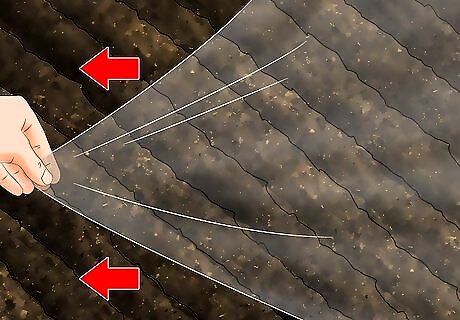
Cover the soil with a large sheet of clear plastic. Stretch a clear plastic strip over the upturned soil within the garden bed. The plastic should slightly exceed the width and length of the garden. This process will work either on raised-bed gardens or on gardens in the ground. Clear plastic can be purchased at a local hardware store. Home-supply stores, gardening stores, or hardware stores may also stock large sheets of plastic.
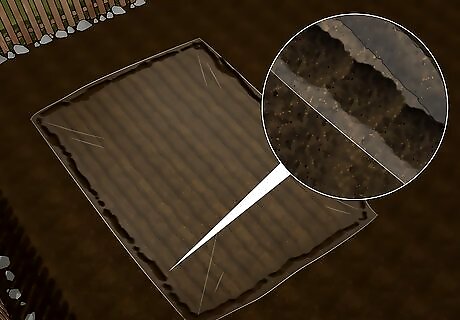
Seal the edges of the plastic around the garden. Use excess soil to weigh down the edges of the plastic sheet. Depending on the size of the garden plot, use your hands or a trowel to pile soil and dirt on top of the plastic edges. Cover the edges all the way around the garden plot. Sealing the edges of the plastic will keep the moisture inside of the plastic and focus the sun's heat on the soil, killing the nematodes.
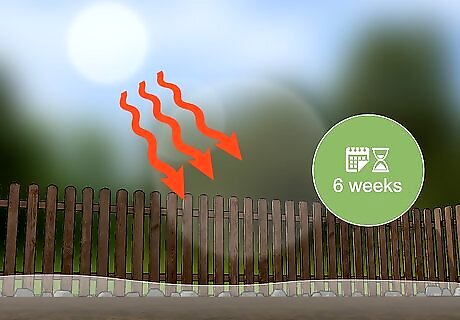
Allow the sun to solarize the soil for 6 weeks. During this time, heat from the sun will be trapped between the plastic and the garden soil. It takes at least 6 weeks for the temperature in the garden to raise enough to kill all nematodes in the top 6–8 inches (15–20 cm) of soil. Since you want as much sun and heat on the solarizing garden as possible, it's best to solarize the garden during hot summer months. Periodically take a walk around the garden to ensure that the edges have not been uncovered by an animal or blown loose in the wind.
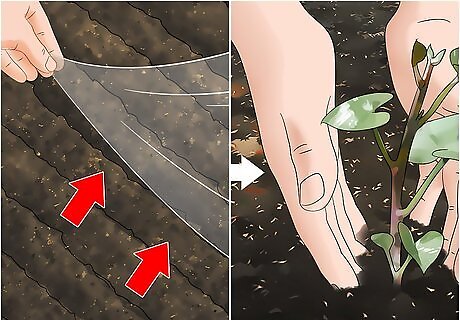
Dispose of the plastic and plant the garden. Once 6 weeks have passed, you can dig up the edges of the plastic and recycle or throw the plastic away. Then plant the garden plot with the desired crops or flowers. Do not re-till the soil after solarization. Re-tilling may bring up nematodes from deeper than 6–8 inches (15–20 cm), which will not have been killed by solarization.
Removing Nematodes through Plant Rotation
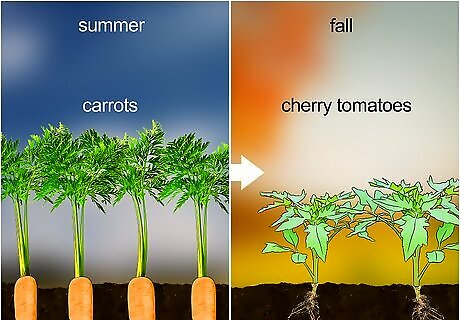
Alternate nematode-susceptible and -resistant plants from season to season. As each seasonal growing season concludes, plant nematode-resistant plants in a section of your garden where nematode-susceptible plants had formerly been planted. This will kill off the nematodes in the soil. Plant rotation will also prevent nematode-susceptible plants from being killed. Alternate susceptible and resistant plants from one growing season to the next. For example, if you've been growing nematode-susceptible carrots in a row of your garden during the summer, rotate in a nematode-resistant vegetable like cherry tomatoes in the fall. Nematode-resistant plants will tolerate nematodes longer than other varieties, but plants bred to be nematode resistant can still be hosts to nematodes and can still increase the number of nematodes present in the soil, although less so than more susceptible varieties.. Look for varieties of plants labeled as being resistant to root-knot nematodes. For example, only a few varieties of peppers are nematode-resistant. Within plant species, nematode resistance varies wildly between varieties and by the genus of nematode. Carrots, lettuce, okra, beans, onions, and tomatoes are often susceptible to plant parasitic nematodes, but new nematode resistant varieties are being bred all the time. Research nematode-resistant or nematode immune varieties of plants before planting.
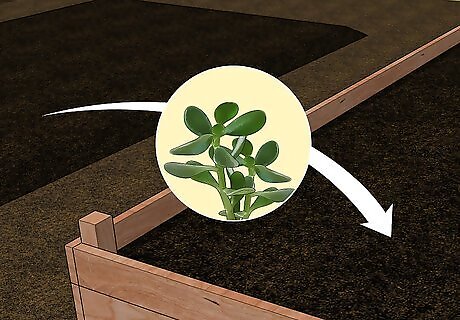
Move susceptible vegetables to a new location in the garden. Rather than removing nematode-susceptible plants from your garden altogether, you can simply move them a few rows over and continue growing them. Relocating susceptible vegetables to a row which formerly grew nematode-resistant vegetables will ensure that nematodes are not already present in the soil.
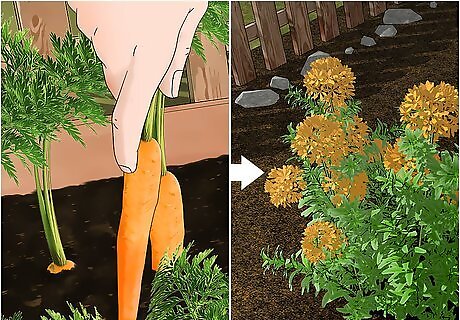
Alternate resistant flowers and grasses into the garden. Nematode-resistant veggies aren't the only plans that you can use in your plant-rotation schedule. Certain small grains, grasses, and flowers are resistant to the pests and will kill off nematodes in the soil where they're planted. For example, plant a row of marigolds in a row which was formerly filled with nematode-susceptible vegetables. Or, plant a row of fescue (a grass species) or small grains like wheat, rye, or barley.














Comments
0 comment